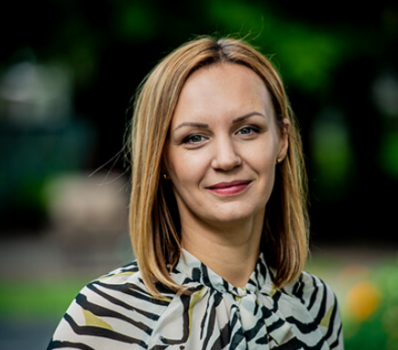
Dialogue
Simple experiments at home to develop the spirit of exploration in children
reschool “CreaKids” branch manager Madara Stonkus
Children’s education plays an important role in promoting their intellectual development and curiosity. One of the ways to promote a child’s curiosity is research and conducting various exciting experiments together with the child. Such activities provide an opportunity to learn new things, as well as promote children’s critical thinking and problem-solving skills. In preschool, children often do interesting and educational experiments together with teachers, but it can be equally exciting to do it at home with parents.
Children’s curiosity is natural
Children are very curious by nature, they still want to explore the world, try and get to know new things. The joint task of parents and also teachers is to promote and develop this curiosity, directing it in a productive way. If parents are present and create a supportive and creative environment, the child will feel safe to discover and explore the world around him. Simple and creative experiments that can be done at home are a way to talk about serious things in an entertaining way – environment protection, safety, reducing food waste, saving natural resources, etc.
Dirty clothes can be washed, but spilled water can be wiped up
The main thing is to notice the child’s interest and passion in time, to appreciate it, without suppressing the natural desire to study. In the creative research process, you should try to avoid comments such as “shouldn’t”, “can’t”, “try not to break something” – of course, parents should be close and take care of the child’s safety, but at the same time remember that dirty clothes can be washed, but spilled water – wiped up. If the research process, for example, observing nature in the rain means muddy shoes and clothes, but brings joy to the little researcher, it will definitely be worth it.
“Germs” from pepper and learning to wash hands regularly
What simple experiments can be done at home and what materials can be used? Before going to the store to buy little explorer kits, it’s definitely worth looking at things that are already found in almost every home. Very young children are very interested in working with water – it is also an opportunity to learn about the importance of water in various aspects of our lives. The easiest thing to do together is to put different things in water and discuss why some things float and others don’t. Also, water can be used to learn about volumes by pouring it from one container to another. You can also use different food products – oil, beet juice, soda, etc., mixing with water and observing the results. There is also a very popular experiment about pepper microbes- put pepper in water, then add soap and you can see how the pepper or “microbes” run away from the soap. This will help your child learn the importance of washing hands with soap to avoid germs.
Growing avocados and a “rocket” from a tea bag
It is recommended to use a variety of natural materials. Show the child the difference between placing flowers in a vase with water and without water. Gather and dry different tree leaves and flowers together, plant onions in pots on the windowsill, grow an avocado tree from a seed, make a “rocket” from a tea bag, make soap bubble liquid and blow bubbles by yourself, etc. On the Internet, there is a wide range of suggestions and descriptions for doing experiments at home, which are not only fun, but also teach the child the importance of washing hands and teeth regularly, drinking water regularly, taking care of plants, etc.
A daily walk as research
Exciting research can also be done during a daily walk – before going for a walk, draw up a list of tasks, for example, find five different trees, see two different birds (in the city you will surely meet at least a sparrow and a pigeon), measure how long the grass has grown near the house or even find out , how deep is the puddle in the yard? Then all you have to do is dress appropriately and go do some research, filling out the sheet as you walk. After the walk, it is also possible to discuss together what you have seen – about the growth of trees and the change of color of leaves, the life of birds in the city or in the countryside, etc. With older children, such worksheets can also include math problems or yoy can make them, for example, in English, while also learning new words.
Time spent together
In preschool, together with teachers, children also focus on more complex experiments. “CreaKids” has an experiment day once a month, when we focus on small tasks, but once a year a larger project is implemented, which is then presented to the whole group. Often, not only children, but also parents are actively involved in these experiments, in which the inner child also awakens, and they happily enjoy things that they may not have done in their childhood.
Both in experiments at home and in preschool, the most important thing is the lessons we learn during it. Experiments do not always succeed the first time – an onion may not grow, a tea bag may not fly away. It is an opportunity to show the child that after the first failure you should not give up, but try again. Talk, tell that sometimes you have to make an effort to achieve the result. In addition, sometimes the greatest joy is not the result, but the work that you can do together.

 Log In
Log In